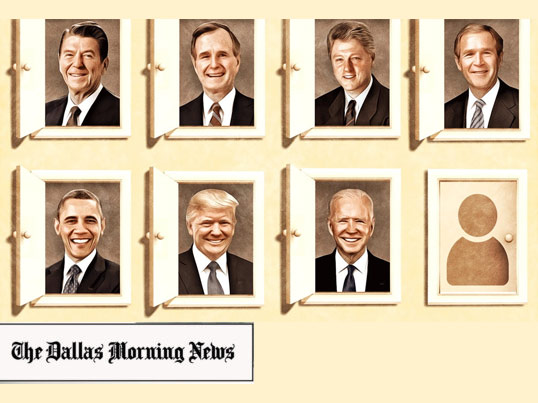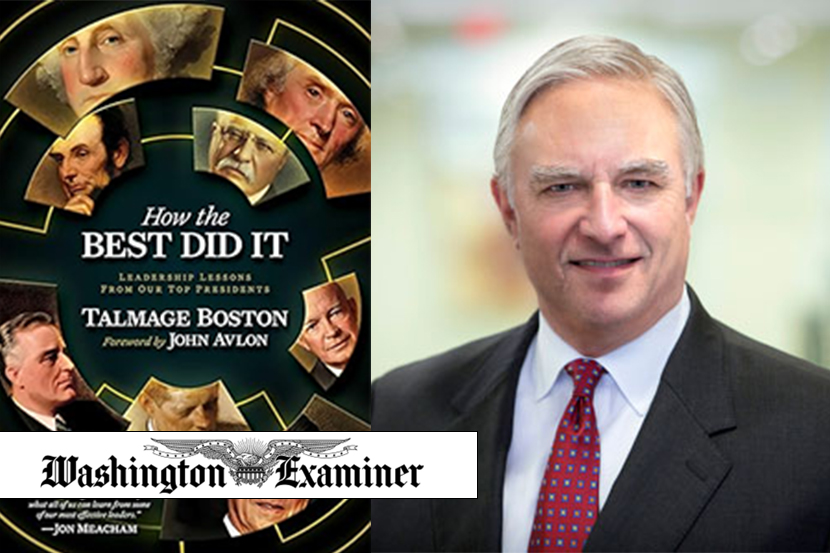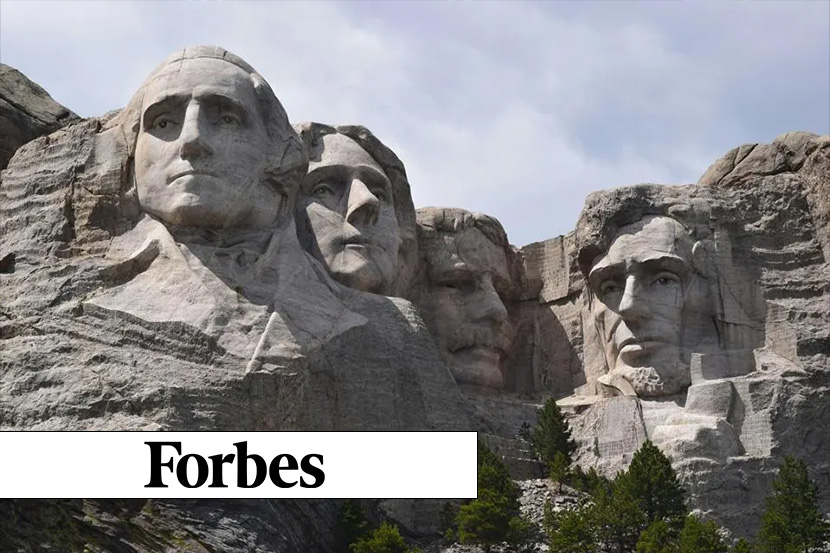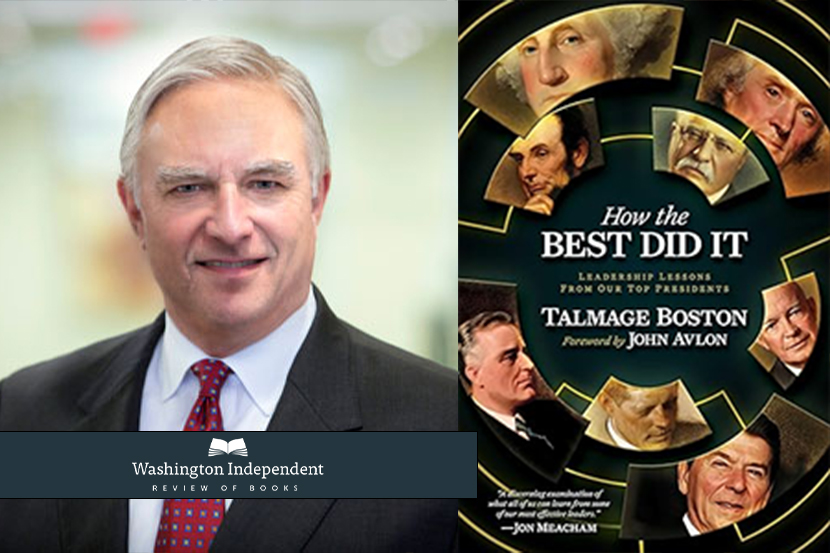Predicting the next POTUS is tricky business.
By David O. Stewart and Talmage Boston
On the eve of Presidents Day 2023, might history help guide our prediction on the most likely candidate to win the Oval Office Sweepstakes in 2024? Maybe. Maybe not.
In the 1980s, the trend was so obvious even the pundits saw it: President Ronald Reagan’s election appeared to signal a transition to Hollywood on the Potomac, with politics as show business and the movie industry as a breeding ground for future national leaders. Going forward, the conventional wisdom suggested, only trained actors would be viable contenders for the Oval Office.
In 1988, when the New York Daily News identified possible Reagan-like successors, they included the likes of Clint Eastwood (“Make My Day”), Charlton Heston (Moses!), Arnold Schwarzenegger (Oops, disqualified due to birth in Austria), Bill Cosby (Hey, we really didn’t know), and Sylvester Stallone (Gonna Fly Now!).
After all those crystal ball predictions were delivered with some level of conviction, who followed Reagan into the White House? Earnest but undynamic George H.W. Bush. Who will be the next actor-president after Reagan? We’re still waiting.
The next supposedly obvious template was those bearing the birthright of a dynastic family. That conventional wisdom struck fear in the hearts of aspiring leaders not named Bush or Clinton. Alas, it didn’t work out so well for Jeb or Hillary.
The lesson deduced from Barack Obama’s two terms was that the White House doors were finally going to be wide open to citizens from the “global majority.” With the color barrier broken, it seemed the time would soon arrive for a woman to become commander in chief. That may turn out to be true someday. We sure hope so. But the wait continues.
Most recently, the betting favorite was a billionaire — a can-do type, unburdened with any experience in public responsibility, dripping with dollars. Donald Trump’s improbable victory in 2016 drew into the arena fellow moneybags Mike Bloomberg, Tom Steyer (remember him?), and Howard Schultz (who didn’t quite get into the arena, but he sure tried). Mark Cuban even thought about it. So who beat Trump in 2020? Not a mogul but a career politician with zero business experience: Joe Biden from Scranton, Pa. He made his money the old-fashioned way: trading on his celebrity to peddle books and deliver high-priced speeches to wealthy business types.
This pattern of mistaken prognostications is not just a recent phenomenon. In the first half of the 20th century, two Roosevelts resided at 1600 Pennsylvania Ave. for a combined total of two decades. The nation appeared to crave aristocratic New Yorkers at the top. Then it didn’t. Remember Nelson Rockefeller?
John F. Kennedy supposedly demonstrated that after 70-year-old Dwight Eisenhower left the White House, it would be young handsome heartthrobs who would occupy the Oval Office. JFK’s successors turned out to be Lyndon Johnson, Richard Nixon, Gerald Ford, and Jimmy Carter — four presidents with charisma that approached the vanishing point.
Is there an explanation for why we can’t get a decent trend going for predicting future presidents? A few reasons come to mind, starting with an easy one: The United States is a big diverse country filled with people of high ambition who are wired to believe they can do better than whoever is currently in charge.
The requisites for winning the opportunity to lead the nation can be distilled into a short list of essentials: a good strategic sense, an ability to speak to people effectively, a record of doing at least something noteworthy, a gift for attracting media attention, off-the-charts self-regard, and having the means to raise the billions of dollars necessary to run a national campaign.
With those necessary traits in a candidate’s toolkit, the pool of possible presidents in the next few elections is not immense, though it’s not tiny, either. Today, there are nearly 1,700 players in the National Football League, and the United States has had 94 chess grandmasters since 1970. Those are the kinds of things that look good on a presidential résumé — success that leads to more success. The number of possible presidents likely to throw their hats in the ring over the next 20 years probably falls between those parameters.
Or maybe it doesn’t. After all, whoever heard of Carter before he ran for the presidency? Whoever thought Trump would actually run for the office?
Plenty of variables frame every election, starting with the prevailing conditions in different parts of the country and the mood of voters in those places. Those variables shift from election to election and decade to decade. Are we now fighting inflation, or are we more worried about recession and unemployment? What do we think about climate change, and what do we want to do about it? Is income inequality an issue worth addressing? Tariffs, anyone? Is there a tax revolt coming? Are we afraid of China? Or Russia? Do we support Ukraine to the bitter end? What should be done to secure the border? Do we want to hope or hate? It’s different every time.
Then there are practical political variables. Who else is running? Who gets a few lucky breaks? Who blows up over a gaffe (Rick Perry’s “Oops” moment) or a scandal (Gary Hart’s trip to Bimini on the yacht Monkey Business)? Who will gain key endorsements? How does the political power structure shape up within each dysfunctional party? Who’s figured out how to manipulate the media’s current blind spots and chronic fecklessness? What will public opinion accept? (See, voters do count, at least a bit.)
These unpredictable factors interact along the campaign trail, in the midst of dynamic world events, to produce … a president. Desperate to make sense of American public life, we attempt to pluck a few factors out of this stew of trends, conditions, feelings and random events. Then, thinking we’ve connected the dots properly, we see the pattern! That, in turn, provides a template for the next American president. The concept definitely has logic to it, but why do we keep making such glaring mistakes?
One reason may be that reliable prediction patterns really do emerge — or at least they used to. Presidential templates actually worked, at least for a few elections. Four of our first five presidents were wealthy Virginians who played prominent roles in the nation’s founding — George Washington, Thomas Jefferson, James Madison and James Monroe (OK, Monroe wasn’t that wealthy). The pattern was clear enough to annoy people in other parts of the country.
There also were the Adamses, father (John) and son (John Quincy), from Massachusetts.
Then, for a stretch, we elected three presidents who represented the frontier west of that day: Andrew Jackson, William Henry Harrison and James K. Polk.
In the decade before the Civil War, we had consecutive “doughface” presidents from Northern states who had no desire to disturb slavery in the South: Millard Fillmore, Franklin Pierce and James Buchanan. Then we had the uniquely great Abraham Lincoln followed by the uniquely incompetent Andrew Johnson.
After the Civil War, former Union Army generals won four consecutive elections: Ulysses Grant twice, Rutherford Hayes and James Garfield. Two more of their war veteran compadres served in the White House before the 19th century ended: Benjamin Harrison and William McKinley. In fact, for almost 40 years, a narrow but consistent majority of the nation felt better with a Union Army veteran in charge.
By the 20th century, the United States was past its postwar mindset, and in its place the country thrived with new immigrants, industry and wealth. We had more people from more places spread across more of the continent. As the decades moved forward, we lost the concept of Fortress America, protected from international troubles by two oceans. Not once but twice world wars included us. In an interconnected world, the complexities of keeping peace with hostile nations around the globe became an American concern. How best to effect a sound foreign policy became a top priority for every presidential candidate.
So, as we slouch nervously toward the upcoming campaign madness, with Election Day only 21 months away, the current presidential template is … [drum roll!] … gerontocracy! Again, the pundits see it and hyperventilate. On Election Day 2024, as of now, the likeliest Democratic candidate (Biden) will be two weeks away from his 82nd birthday; and the likeliest Republican candidate (Trump) will be 78 years and five months old. Yikes!
Is this the new template for the American president, that Americans truly want someone so “seasoned” that Walter Reed Hospital may replace the White House as the presidential residence?
We think not. We fearlessly reject the current gerontocracy template and hereby predict that our next president is likely to be a spry young thing enjoying his or her 60s, or 50s, or even 40s. That is, unless he or she isn’t. You never know.
David O. Stewart has written five books of history, including studies of Presidents George Washington, James Madison and Andrew Johnson. Talmage Boston is a presidential historian and lawyer in Dallas. They wrote this column for The Dallas Morning News.
We welcome your thoughts in a letter to the editor. See the guidelines and submit your letter here.





